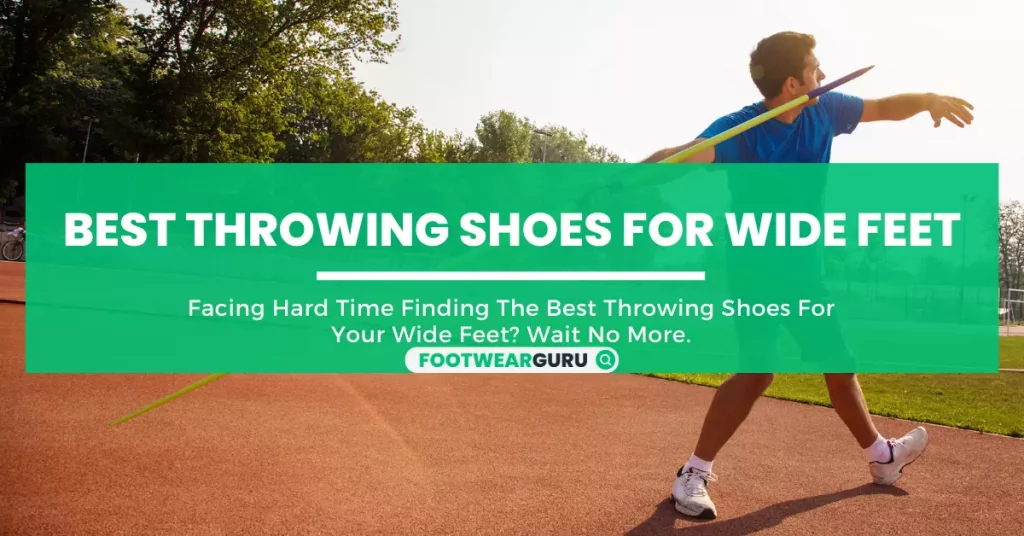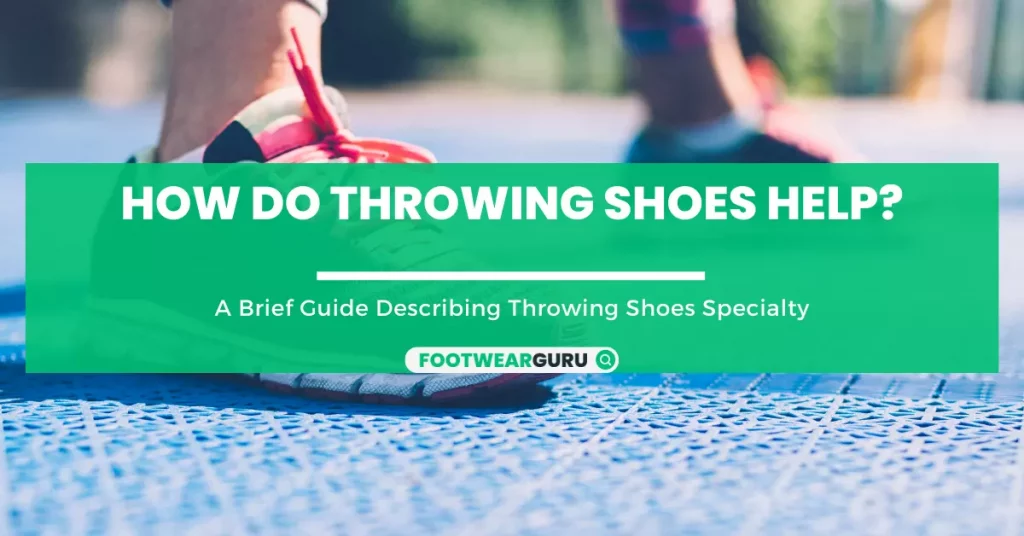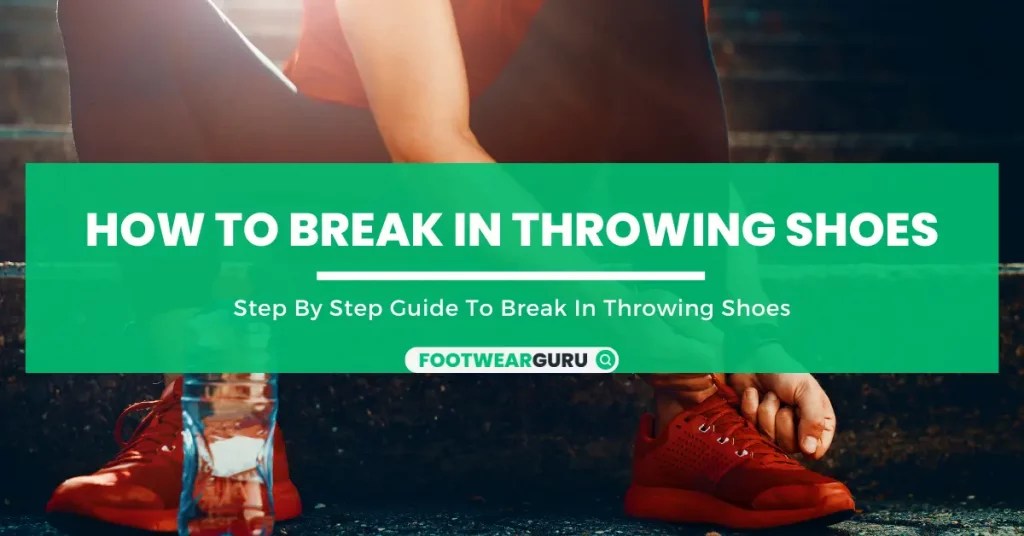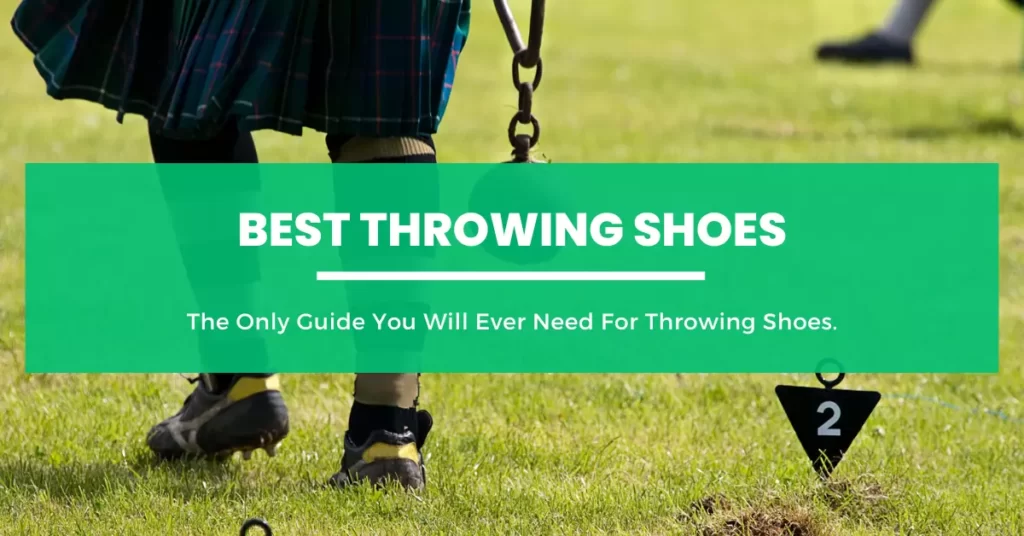The answer is yes, you can run in throwing shoes, but there are a few things you should know that might put you off running in throwing shoes.
Running shoes have some features that will help you run, which you won’t find in throwing shoes. For this reason, long-term use of throwing shoes for running may damage your feet. Also, running with throwing shoes can cause some other problems, such as:
Key Takeaways:
- The purpose of throwing shoes is different from that of running shoes. A thrower uses these shoes to perform well at throwing events. Throwing shoes usually have snug fittings, flat bottoms, and lockdown features. In contrast, running shoes are designed solely for running, with waffle patterns and a comfortable fit. After considering all the information, it is clear that running in throwing shoes is actually possible. However, you will likely hurt your feet if you run for long periods with them.

Slip While Running
Those of us who know about throwing shoes in detail must have understood this point. Since throwing shoes have plain soles and no grip, there is a risk of slipping while running. Generally, throwing shoes are made in such a way that there is less grip between you and the ground, but the most important thing when running is grip, so if you run wearing throwing shoes, you must keep this in mind.
My Tips to Avoid Slipping
Shoe Recommendation:
My personal opinion is to wear a shoe with maximum traction while running. You can use shoes like:
Under Armour Men’s Charged Assert 9.
ASICS Men’s Gel-Contend 7 Running Shoe.
Take small steps while running:
According to Dr. Jack Daniel’s, an exercise physiologist, running coach, and coach of Olympic athletes.
You over-stride when you take big steps. In other words, your heel hits the ground first and takes most of the impact. If your heel hits something slippery, it will fly out in front of you and knock you down before you can blink. Not good. When you take small steps, the middle of your foot lands right under your center of gravity. This keeps you from slipping.
Foot Problems
As I stated at the outset, running in throwing shoes can cause various foot problems. So let’s not know the reasons first. Those who wear throwing shoes on a regular basis know that it has a snug fit. And because of this, you can not get comfort while running. The following are some problems you can get from wearing throwing shoes while running:
Tight shoes can make things even worse. They might:
- Putting you at risk of falling.
- Change the shape of your toes, give you blisters between your toes, and make problems like hammer toe, mallet toe, and bone spurs.
- You may experience symptoms of bunions, flat feet, numbness, inflammation, and pain in your heel or ball of your foot (metatarsalgia) when you wear snug-fit throwing shoes.
- Your toes and feet may lose cartilage over time.
Running vs. Throwing Shoes: Differences
Running Shoes
Waffle pattern sole with Toe spring: Shoes for running Outsoles usually have a waffle pattern for grip, carbon rubber to make them last longer, and forefoot flex grooves to make them as flexible as possible. Toe spring is also there. The upward curve of the toe box is the toe spring.
It keeps the toes bent up and helps the foot move forward with each step.
Heel to forefoot drop: The drop of a shoe is how steep the angle is between the heel and the toe. The drop is bigger the steeper the angle. Many traditional running shoes have a drop of about 10 mm, and the extra cushioning in the back helps to absorb impact. Many shoes on the market now have a lower drop or even none at all, which makes it easier to land in the middle of the foot (vs. heel striking).
Comfortable Fit: When you wear socks, your running shoes should be half a size bigger than your regular shoes. They should fit snugly around your heel and midfoot, but leave room for your toes to move. You should try to leave about the width of your thumb between the shoe and your big toe. Remember that your feet get bigger when you work out, so bigger is better.
Throwing Shoes
Flat and smooth shoe bottom: Most shoes used for throwing have a flat, smooth bottom.
Because a shoe with a flat, smooth bottom makes it easier for the thrower to spin smoothly, which helps build up speed before the throw.
Lockdown: Lockdown is an important part of a pair of shoes for throwing because it keeps the foot in place and pushed down into the platform.
Tight Fit: Throwing shoe fits like a glove, which means that there is no room for movement anywhere in it. Everywhere is very tight. There is no edge that slips. Many experts think that athletes, especially throwers, do better when their gear fits like a glove. If you want the clothes to fit like a glove, order a half size smaller than your usual size.
FAQs
Usually the throwing shoe is used for throwing events such as: shot put, discus, hammer and javelin throwing events.
There are some features in running shoes that will help you run that you won’t find in shoes for throwing. Because of this, running in throwing shoes for a long time can hurt your feet. Also, throwing shoes don’t grip the ground very well, so if you run in them, you’re more likely to fall.
The purpose of throwing shoes is to have a low coefficient of friction, so you can spin in them, right? I don’t think this shoe would be appropriate for powerlifting, where you need to be screwed into the ground.
Generally, slipping occurs when you run too fast for the conditions underfoot and your shoes’ grip. If you are running in slippery conditions, run somewhere else or wear shoes designed for that kind of setting.
Additionally, a long stride and a heel strike may contribute to this problem. Your center of gravity should be maintained over your feet by taking faster, shorter strides and not reaching out so much with your leading leg.
Final Word
So it can be said that if you wear best throwing shoes, you can run in it, but it can damage your feet, and you can get major injuries. And remember that your health and well-being depend on shoes that fit you well. Always make sure the shoes you buy fit you well before you buy them.





